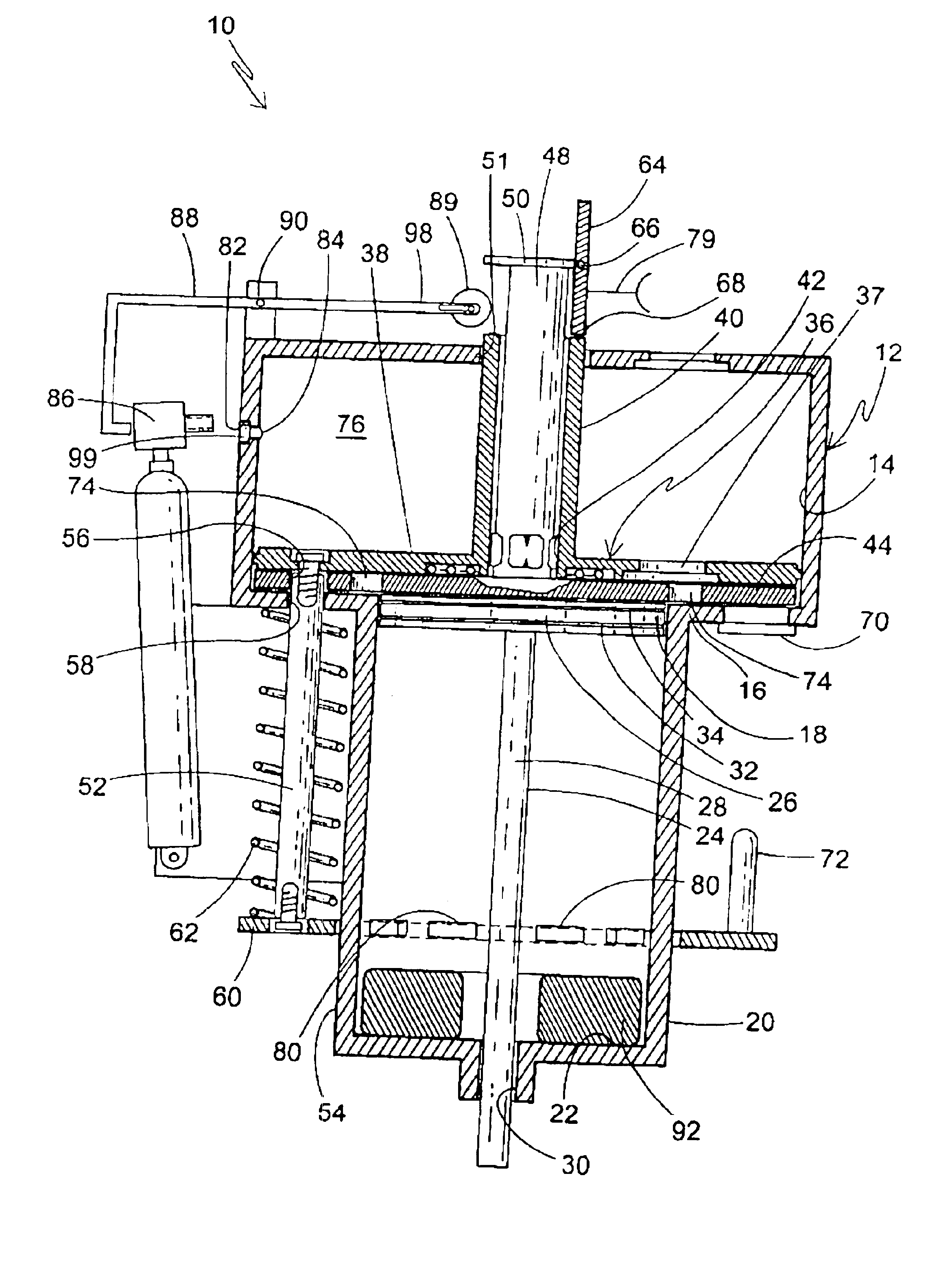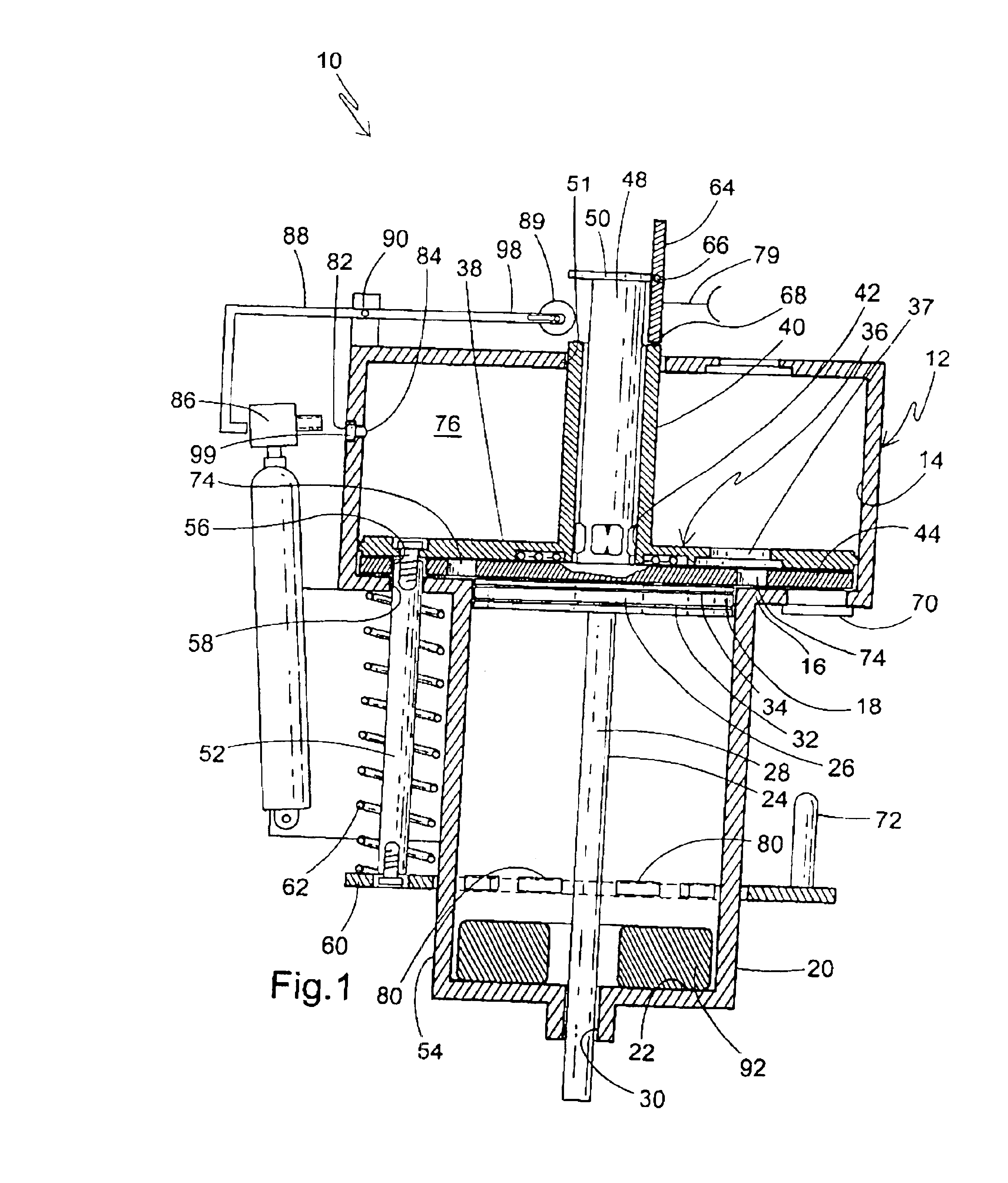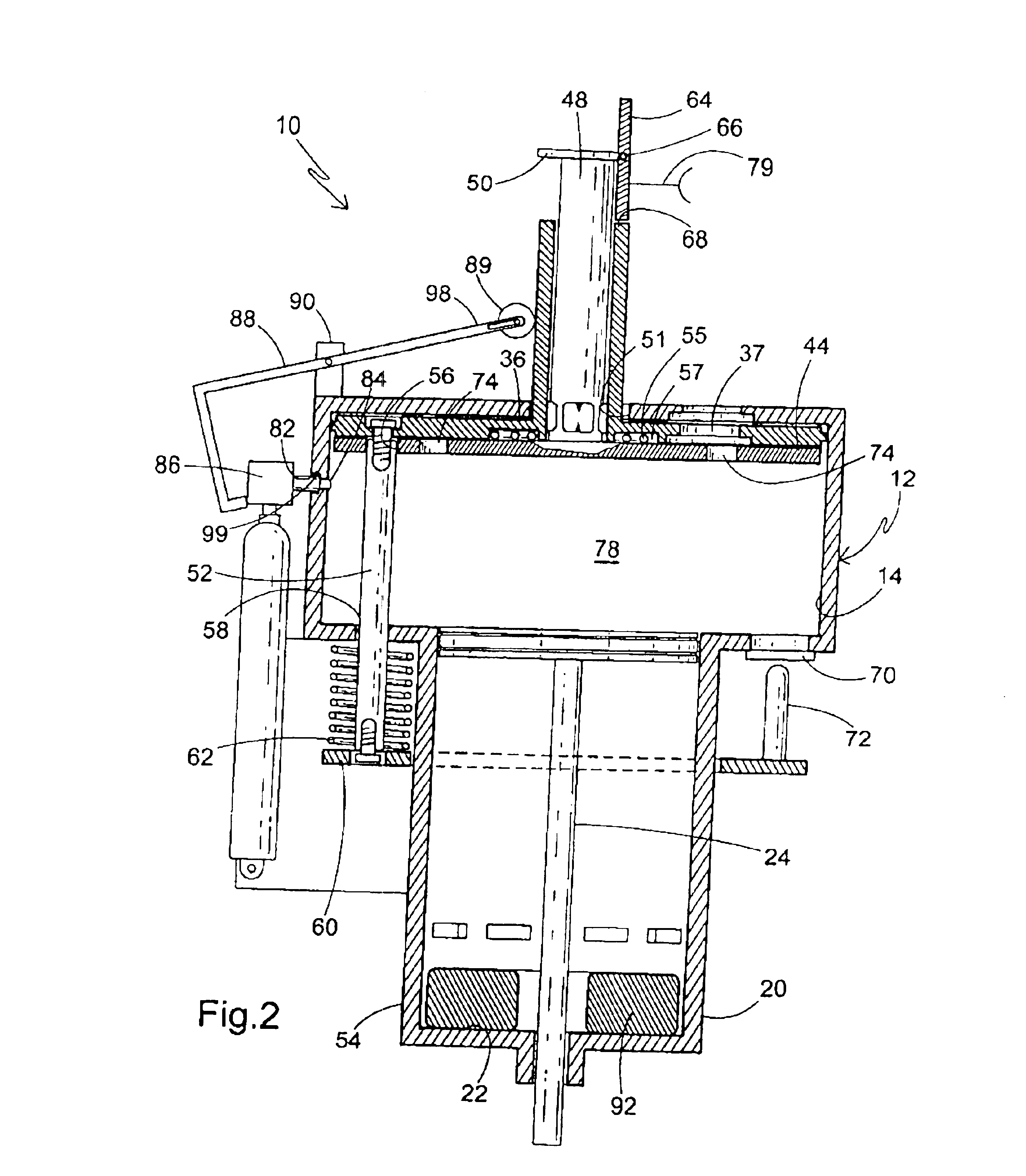Latching mechanism for combustion chamber plate of a fastener driving tool
a technology of gas fastener and clutch mechanism, which is applied in the direction of nailing tools, hot gas positive displacement engine plants, combustion engines, etc., can solve the problems of reducing increasing the risk of costly repairs, and affecting the service life of the tool, so as to reduce the cost of manufacturing and repair, and the effect of rapid burn of the fuel air mixtur
- Summary
- Abstract
- Description
- Claims
- Application Information
AI Technical Summary
Benefits of technology
Problems solved by technology
Method used
Image
Examples
embodiment 100
[0050]Referring now to FIG. 6, the embodiment 100 is depicted when the latch member 116 is released, or is moved laterally generally outward, after the trigger 79 is fully depressed, causing ignition. A second spring 132 is attached to the sleeve 108 and drives the divider plate 114 downward until a stop 134 disposed on an inner wall 135 of the sleeve 108 engages the divider plate. A first flow volume 136 and a second flow volume 138 are defined in the sleeve volume 126 by the downward displacement of the divider plate 114. The fuel-air mixture flows through holes 140 in the divider plate 114 from the second flow volume 138 to the first flow volume 136. Turbulence is thus created in the first flow volume 136 which is used to produce a faster flame speed.
[0051]Referring now to FIG. 7, combustion occurs in the first flow volume 136 by igniting the fuel air mixture when the divider plate 114 reaches the stop 134. In the preferred embodiment, ignition occurs via a spark plug as is shown...
embodiment 150
[0052]Referring now to FIGS. 8-11, another alternative combustion chamber assembly incorporating a latching mechanism is generally designated 150. Components which are shared with the latching mechanism 100 have been designated with identical reference numbers. A distinctive feature of the embodiment 150 is that the latching mechanism uses at least one spring biased latch member and a cam to engage at least one of the latch members. Another feature of the mechanism is that it increases the flow of air and fuel through openings in the divider plate 114, which maximizes the firing response time of the tool. The latching mechanisms of the combustion chamber assembly 10, 100 use a hole size in the divider plate, 44, 114 that optimizes the drive force of the piston. In some applications, the optimal hole size may be too small to allow the divider plate to snap back into the upward position after the tool has been triggered. This affects the rate at which the tool can be repeatedly fired....
PUM
 Login to View More
Login to View More Abstract
Description
Claims
Application Information
 Login to View More
Login to View More - Generate Ideas
- Intellectual Property
- Life Sciences
- Materials
- Tech Scout
- Unparalleled Data Quality
- Higher Quality Content
- 60% Fewer Hallucinations
Browse by: Latest US Patents, China's latest patents, Technical Efficacy Thesaurus, Application Domain, Technology Topic, Popular Technical Reports.
© 2025 PatSnap. All rights reserved.Legal|Privacy policy|Modern Slavery Act Transparency Statement|Sitemap|About US| Contact US: help@patsnap.com



